- Accès directs
Alphonse de Rothschild at the Hôtel de Saint-Florentin Also known as Hôtel de Talleyrand
The Hôtel de Saint-Florentin was built by Ange-Jacques Gabriel and Jean-François Thérèse Chalgrin in 1769 for Louis III Phélypeaux, duc de la Vrillière, comte de Saint-Florentin and secretary of State – one of the most influential figures of king Louis XV’s reign. From 1812 to 1838 it served as the Parisian mansion of Charles Maurice de Talleyrand-Périgord, Prince of Bénévent (Paris, 1754 - Paris, 1838) and was then acquired by Baron James Mayer de Rothschild in 1838.
In 1857, after his marriage to Léonora de Rothschild (1837-1911), Baron Alphonse de Rothschild made the decision to settle in this privileged neighborhood, home of the political and diplomatic elite. Alphonse de Rothschild – who was the first son of James Mayer de Rothschild and heir to the French Rothschild Empire - had received a cosmopolitan education. He studied German, English and Hebrew and traveled to England, Italy and the United States. He took his place at the head of the family bank with his brother Gustave after their father’s death in 1868.
About that time, Alphonse had the mansion rue Saint-Florentin completely refurbished, reusing interior decors from other properties such as the Pavilion built in Louveciennes for Madame du Barry by Claude Nicolas Ledoux. Alphonse also used his mansion rue Saint-Florentin to receive the world of politics, arts and finances and to host some of his extensive art collection.
Overview of Alphonse art collection at the Hôtel de Saint-Florentin
Alphonse is considered as one of the main collectors among the Rothschild Family in several domains comprising furniture, decorative arts and 18th century paintings. This collection was mainly assembled between 1870 and 1895 with masterpieces of Dutch, Flemish and French painting. Alphonse shared his collection between his mansion rue Saint-Florentin and the Château de Ferrières.
The distribution of artworks between those two properties don’t seem to follow any strict rules (Prevost-Marcilhacy ,2016) Yet is can be noted that 18th century French paintings and Dutch paintings – inherited from his father – were mostly located in Paris.
The ‘Salon Rubens’ in the mansion rue Saint-Florentin highlights his appeal for Dutch painting. Alphonse displayed a selection of his most prestigious masterpieces in this Salon: Hélène Fourment with a carriage by Rubens (1639, Paris, Musée de Louvre, acquired by “dation” (in payment of property transfer tax), 1977) and Rubens with Hélène Fourment and their son Peter Paul, by Rubens (circa 1635, New York, Metropolitan Museum of Art, donation by Mr. and Mrs. Charles Wrightsman in homage to Sir John Pope-Hennesy, 1981)
Pierre Paul Rubens, Hélène Fourment with a carriage, Salon de Rubens, hôtel Alphonse de Rothschild, 2, rue Saint-Florentin, Paris.
Among the many Dutch paintings once owned by Alphonse, some other masterpieces are now curated at the musée du Louvre: The Atronomer by Jan Vermeer (1668, “dation” (in payment of property transfer tax) by Guy de Rothschild, 1983) and the Woman drinking with soldiers by Pieter de Hooch (1658, donation by Jacqueline Rebecca Louis de Rothschild – Jacqueline Piatigorsky, 1974).
Johannes Vermeer, The Astronomer, oil on canvas, 1668, collection Alphonse de Rothschild, "dation" Guy de Rothschild, 1983, Paris, Musée du Louvre,Department of Paintings, inv. RF 1983-28.
Regarding French Arts, several pieces of the collection relate to the art patronage of Madame de Pompadour. It is the case with Madame de Pompadour as Friendship, a statue by Jean Baptiste Pigalle (1753, Paris, Musée du Louvre) designed for the friendship grove at the Château de Bellevue (Gaborit 1985), later displayed thanks to the architect Eugène Petit in the dining room of the Saint-Florentin mansion. The Madame de Pompadour as Friendship holding her heart by Etienne Maurice Falconet, completed in 1765, a year after the death of Madame de Pompadour, was also part of Alphonse’s collection. Alphonse, along with his cousin Ferdinand de Rothschild was the main collector of Sèvres porcelain figures that had once belonged to Madame de Pompadour.
In addition, Alphonse owned portraits of Madame de Pompadour; one by François Boucher (1758) – from the Bernis Collection, acquired by Alphonse in 1877 – And another by François Hubert Drouais (Madame de Pompadour with a muff circa 1763). His collection also included two paintings by Jean-Baptiste Greuze commissioned for Madame de Pompadour in Versailles by her brother the Marquis de Marigny ; Simplicity (1759, Fort Worth, Kimbell Art Museum) and the Young Shepard holding a flower (Paris, musée du Petit Palais)
Other French paintings featured in Alphonse’s collection included pieces by Antoine Watteau (The Gazer, 1715, The Romancer, 1716 and L’Occupation selon l’age), and Jean-Honoré Fragonard.
Through his intermediary Léon Gauchez, Alphonse acquired English painting masterpieces too, including Master Hare by Joshua Reynolds in 1874 (1788, bequest of Alphonse de Rothschild to the Musée du Louvre) one of Joshua Reynolds most well-known canvas.
Joshua Reynolds, Master Hare, 1788, verbal bequest from Alphonse de Rothschild, handed over to the Musée du Louvre by his heirs, 1905, Paris, Musée du Louvre, Department of Paintings, inv. RF 1580.
From 1885, Alphonse started to develop his patronage toward contemporary artists. In the year 1892 itself, he acquired over two hundred pieces from the Salon des artistes français and Société nationale des beaux-arts for more than fifty museums outside Paris.
In 1895, a year following the Dreyfus affair, an attack was committed against Alphonse in his Saint-Florentin mansion, leading him to an “almost-retirement” focusing on his collection, the patronage of contemporary artists he had initiated a few years earlier and his philanthropic work.
The Hôtel de Saint-Florentin after Alphonse de Rothschild
Béatrice de Rothschild, Alphonse’s second daughter with Léonora de Rothschild (1837-1911) spent her youth at the Saint-Florentin mansion. Like her father, she played a crucial role as a patron toward French public institutions for instance by passing on the Villa Ephrussi de Rothschild in Saint-Jean-Cap-Ferrat.
Baron Édouard Alphonse James de Rothschild, Beatrice’s brother, also occupied the mansion after his marriage to Germaine Halphen in 1905. He was the heir to his father’s collection, which then passed on to Baron Guy de Rothschild.
Following the Second World War, at Édouard’s death, the Rothschild family rented the mansion to the Government of the United States who later acquired it in 1950.
This themed research was produced by INHA (Institut national d’histoire de l’art) as part of its program The Rothschild collections in French public institutions; in association with the Cultural Heritage office of the United States of America Embassy in Paris for the National Heritage Days 2019 (see all the parterns of this research program).
Laura de Fuccia, Project manager, Institut national d’histoire de l’art, 2019
The principal pages of the themed research were translated by Candice Nancel, Cultural Heritage Manager and Marine Robidel her Deputy as part of the partnership between INHA and the office of Cultural Heritage of the US Embassy in Paris.
Jean-Baptiste Greuze, Child with a dove, Douai, musée de la Chartreuse, former collection Alphonse de Rothschild ; Édouard de Rothschild ; Germaine de Rothschild ; Guy de Rothschild ; market of art, Colnaghi ; collection Dino Fabbri ; bought thanks to the Fonds National du Patrimoine, 2005.
Further reading
Bibliography
– Bascou, Marc, « Les héritiers du baron Edouard de Rothschild », in Prevost-Marcilhacy, Pauline (dir.), Les Rothschild, une dynastie de mécènes en France, 3 vol., Paris, éditions du Louvre/BNF/Somogy, 2016, III, p. 316-325.
– Gaborit, J.-R., Jean-Baptiste Pigalle, 1714-1785. Sculptures du musée du Louvre, Paris, 1985.
– [Paul Leroi], « Le baron Rothschild », L’Art, 3rd S. 1905, n°5, p.257-293.
– Prevost-Marcilhacy, Pauline (dir.) « Salomon de Rothschild, 1835-1864, et Adèle de Rothschild, 1843-1922 », in Prevost-Marcilhacy, Pauline (dir.), Les Rothschild, une dynastie de mécènes en France, 3 vol., Paris, éditions du Louvre/BNF/Somogy, I, 2016 and more specifically in this section of the volume :
– Hall, Michael, « Le baron James de Rothschild, collectionneur de tableaux anciens », exhibition catalog, Les Rothschild en France au XIXème siècle, Paris, Bibliothèque nationale de France, 2012, p. 124-136.
– Prevost-Marcilhacy, Pauline, « Alphonse de Rothschild », in Prevost-Marcilhacy, Pauline (dir.), Les Rothschild, une dynastie de mécènes en France, 3 vol., Paris, éditions du Louvre/BNF/Somogy, 2016, I, p.118-133.
– Prevost-Marcilhacy, Pauline, « Le mécénat envers les artistes vivant en faveur des musées de région, 1895-1905 », in Prevost-Marcilhacy, Pauline (dir.), 2016, I, p. 135-181.






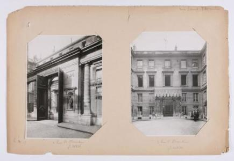
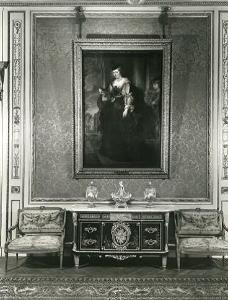
.jpg_300x262.jpeg)
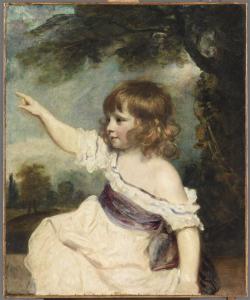


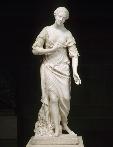
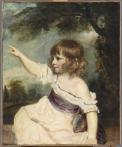
_objectId=defaultWebContent___338e2c8a-88b2-44c5-b368-390de4f08ba3.jpg)

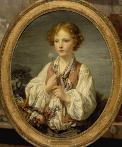
 2 Rue Vivienne - 75002 Paris
2 Rue Vivienne - 75002 Paris




